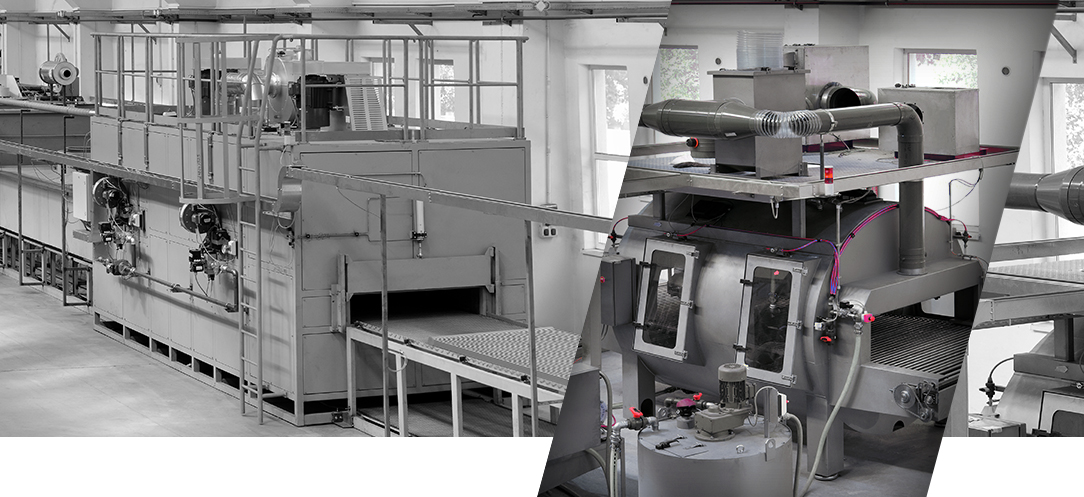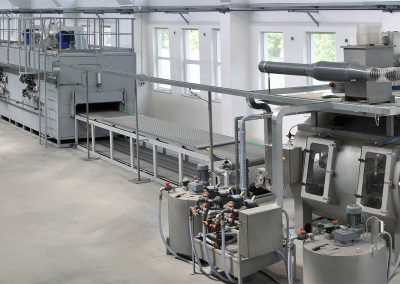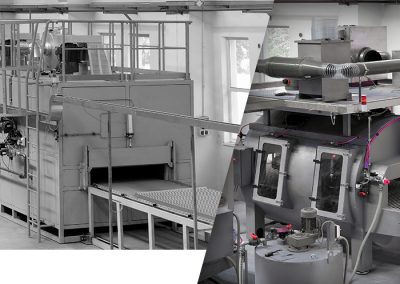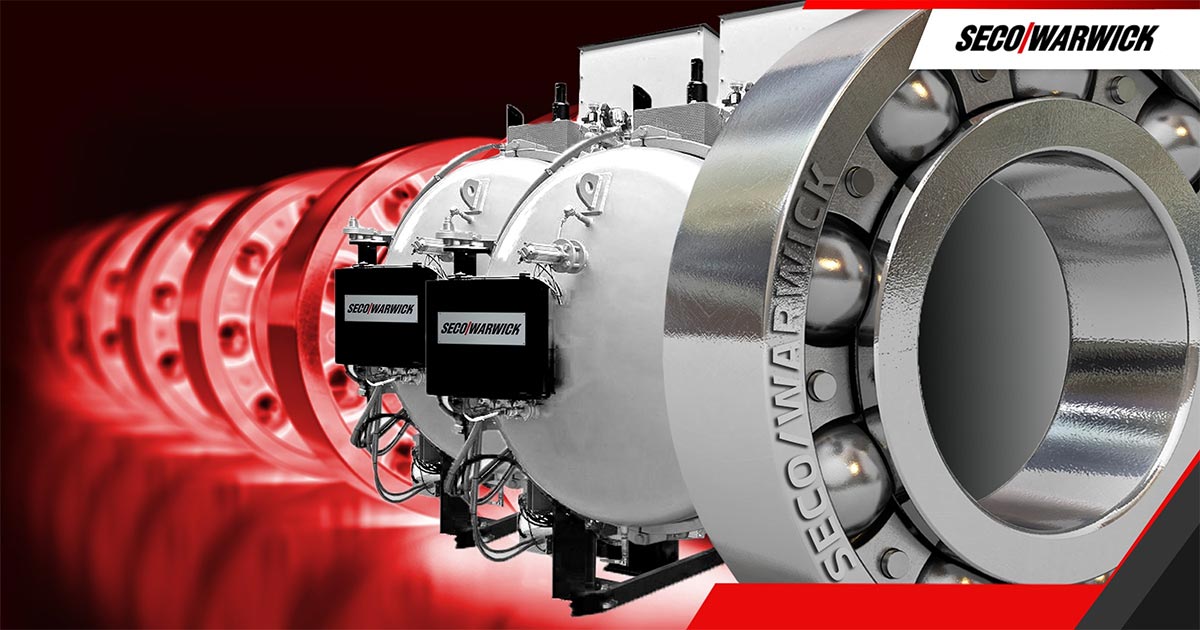
Semi – Continuous Brazing Furnaces for Aluminum
The semi-continuous furnace system is designed to operate on a part-time basis. The furnace can be brought up to brazing temperature from ambient and conditioned with a proper atmosphere in a very short time. This semi-continuous system allows for variable heating and cooling rates, depending on indexing times. This furnace can braze the widest variety of heat exchangers when lower total production requirements are needed.
CAB Furnace Designs
The following furnace designs are available to produce a variety of parts in medium or smaller volume production runs:
Active Only Convection CAB Furnace
Our Active Only Convection CAB furnaces are based on a multi-step indexing cycle. The indexing positions include the load table position, the dry off oven, the entrance purge chamber, the patented convection preheating and brazing chambers, the air jacketed cooling/exit purge chamber and the airblast chamber. The product runs in a horizontal position with an infinitely adjustable dwell time based on the hearth load and load configuration. A thermocouple work zone monitors recovery time when the load is run intermittently. This system includes innovative features to improve brazing efficiency. The load thermocouples are predicting the actual temperature of the product. It allows for automatic control of the required heating time for different types of heat exchangers. The furnace ensures a uniform preheat of product through a patented convection muffle configuration. The indexing mode of work ensures temperature uniformity even for large products (HVAC, battery coolers), thanks to fast transport between cold and hot zones.
Vertical Brazing CAB Furnace
The Vertical Brazing CAB furnace is a uniquely designed version of an Active Only indexing furnace where the brazed elements are positioned horizontally. For some types of heat exchangers such orientation provides benefits as the cladding melts. Vertical positioning of the heat exchanger allows the joints to be evenly filled on a horizontal plane, preventing the brazing alloy from accumulating on one side of the heat exchanger.
Additionally, semi-continuous configured furnaces utilize vacuum purging. This solution limits nitrogen consumption and improves furnace-atmosphere cleanliness. Due to vacuum flushing in the furnace vestibule, air is removed not only in the chamber but also from the internal openings of the heat exchanger. Furnaces of this type may be used in the production of some types of heat exchangers (such as PLATE & BAR), which previously required more expensive vacuum-brazing furnaces.
/ Thermal afterburner to reduce VOC emissions for degreasers
/ Scrubber with active aluminum oxide deposit to reduce the emission of hydrogen fluoride generated during brazing process
/ For gas-heated solutions, energy recovery systems reduce gas consumption and CO2 emissions:
/ heat exchanger system between the thermal afterburner and degreasers
/ energy recovery from the preheat chambers and brazing furnace by transferring exhaust gases under the inlet tunnel and further as support for the Dryer heating system.
/ Electric heating systems instead of gas heating systems (including modification of current equipment) to reduce CO2 emissions
/ Optional applications of high-performance microporous insulation to reduce heat losses and thus reduce energy consumption (in case of gas heating systems – reduction of CO2 emissions)
/ To reduce the temperature drop of the conveyor belt and the load being transported, heating is applied in the inlet tunnel, which results in a shorter re-heating time for both the conveyor belt and the load, lowering net energy consumption (in the case of gas heating systems – reduction of CO2 emissions)
/ A common conveyor belt for the dryer (or TTBB) and the furnace to reduce the energy consumption associated with double heating in case of separate systems (in case of gas heating systems – reduction of CO2 emissions)
/ Energy emitted by the cooling-chamber and dryer are recuperated to support the plant heating
/ Non-emission cooling systems based on air jacket instead of a closed water circuit
/ Control – IDLE and WEEKEND furnaces operating modes lowering the operating temperature and turning the furnace off when it is not needed during production breaks – lowering energy consumption (in case of gas heating systems – reducing CO2 emissions)





